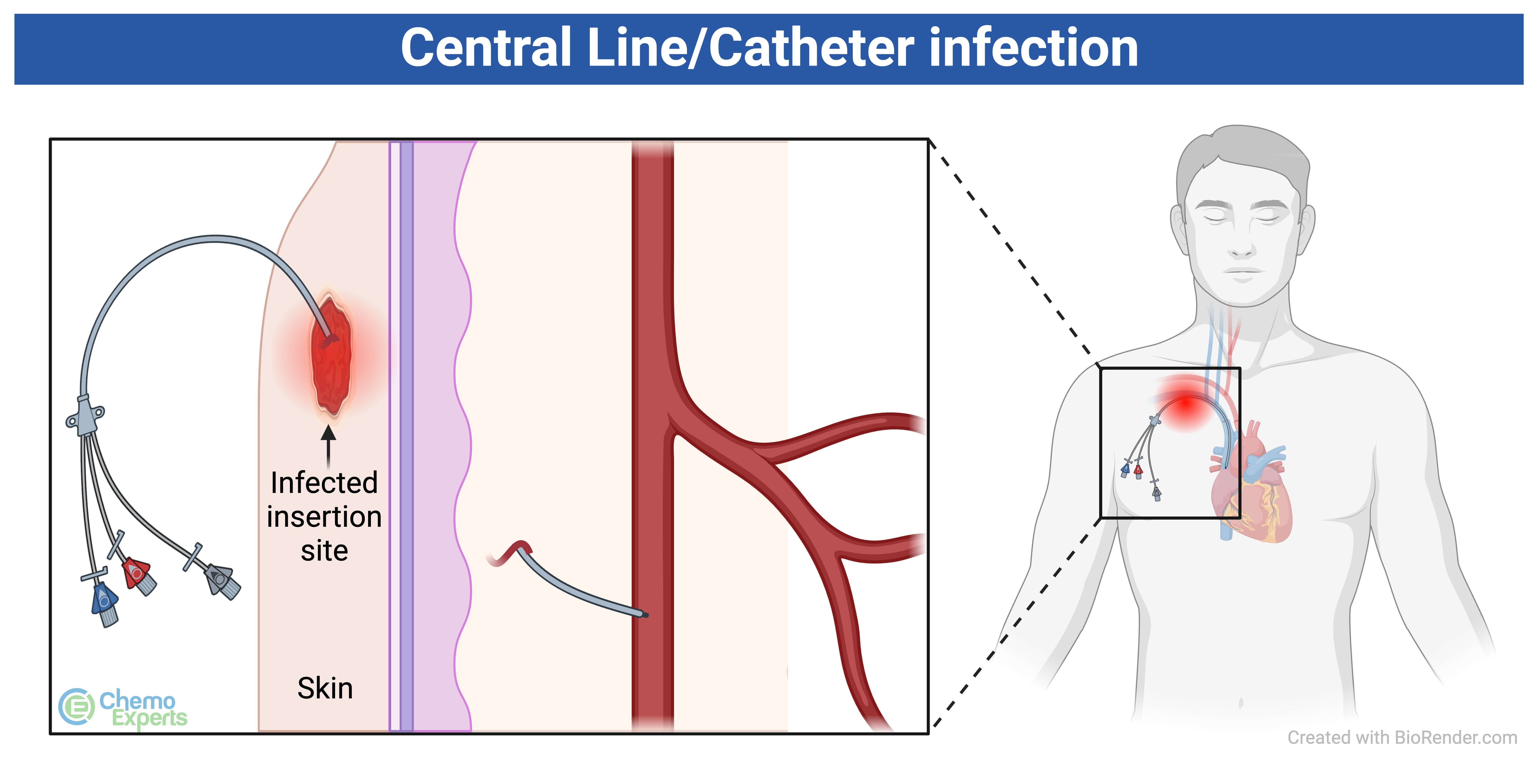Side Effect: Catheter Line Infection
What is a Catheter Line Infection?
A catheter is a plastic device inserted into a vein that allow for infusion of a medication or transfusion of a blood product. A catheter line infection refers to an infection that occurs at the site where a catheter has been inserted in a vein. This is often referred to as a catheter-related bloodstream infection (CRBSI) or catheter-associated bloodstream infection (CABI). It is caused by either bacteria, viruses, fungi, or other microorganisms that enter the bloodstream through a catheter. This can lead to serious complications, especially for those with a weakened immune system, such as certain patients with cancer.
What Does a Catheter Line Infection Look Like?
Signs and symptoms of a catheter line infection are not always obvious, but some symptoms include:
- Fever
- Chills and shivering
- Redness, swelling, or pain at the catheter site
- Drainage or pus at the catheter site
- Rapid heart rate
- Confusion
- Low blood pressure
- Blood test may show a high white blood cell count, which can be high in response to an infection
- A positive blood culture confirming the presence of bacteria, viruses, fungi, or another microorganism in the blood
Catheter Line Infection

Click to enlarge
If you have a central line for infusion of intravenous chemotherapy, intravenous antibiotics, or transfusion of blood products such as red blood cells or platelets, be sure to tell your doctor if you develop a fever, chills or shivering, or shaking, redness, swelling, or pain at the catheter site, or drainage or pus at the catheter site as you may need immediate medical attention.
Who Gets Catheter Line Infections?
Anyone with a catheter is at risk of getting a catheter line infection, including patients with cancer undergoing treatment, as well as patients with strong immune systems. Poor cleaning technique around the insertion site of the catheter may increase the risk of developing an infection.
How Do You Prevent Catheter Line Infections?
Ways to prevent catheter line infections include:
- Proper, sterile catheter insertion technique by the healthcare team.
- Ensuring the catheter is secure to prevent movement and contamination.
- Using good hand hygiene during catheter care and dressing changes.
- Regular catheter site care with antimicrobial or antiseptic agents to kill any bacteria on the surface of the skin.
- Removing the catheter when it is no longer needed.
How Do You Treat Catheter Line Infections in Cancer Patients?
The treatment of catheter line infections may involve the removal of the catheter and administration of antimicrobial therapy, such as intravenous antibiotics. Intravenous antibiotics can often be arranged to be done in the home setting for patients with home health insurance benefits.
In some cases, removing the catheter may be necessary if the infection persists or if there are signs of severe infection or complications. However, if the infection is mild and the patient is otherwise stable, doctors may decide that the catheter might not need to be removed and can be salvaged. This can be done by giving systemic antimicrobial therapy or putting antimicrobial agents into the lumen of the catheter. Antibiotics injected into the catheter, but not pushed into the bloodstream are sometimes referred to as an antibiotic “lock solution”. The choice of antimicrobial therapy depends on the specific microorganism causing the infection.
In all cases, management of catheter line infections are individualized based upon the patient’s underlying condition, type of catheter, the specific microorganism causing the infection, and physician or provider recommendations.
Created: October 1, 2023
Updated: October 9, 2023

